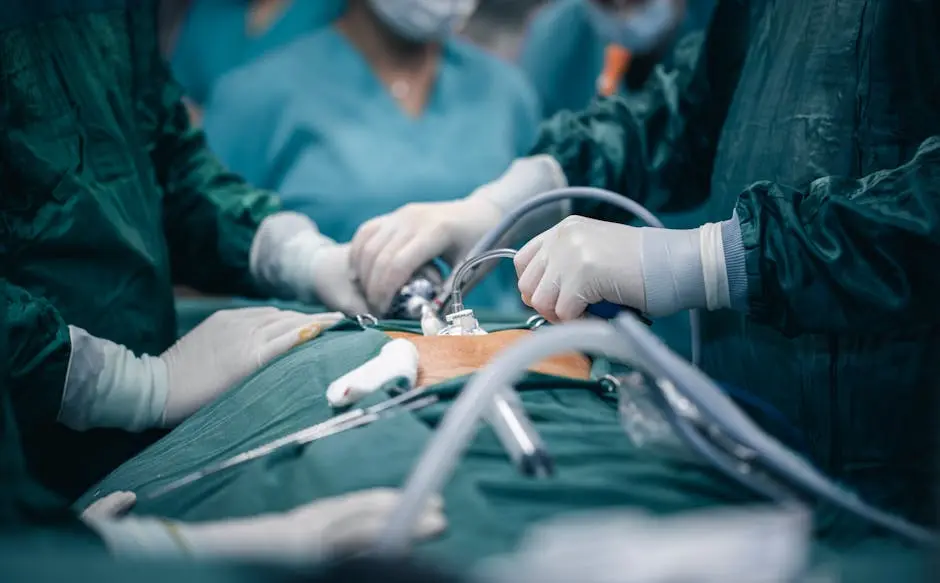Our Blog
Cholecystectomy and Choledochal Cysts: What You Need to Know
July 19, 2025
Are you confused about cholecystectomy and choledochal cysts? You’re not alone! In this blog, we will explore these medical terms that sound a bit daunting but are essential to understand for your health. Let’s break it down together and find out what they are, how they are connected, and why it matters to you.
Understanding Cholecystectomy: The Basics
Cholecystectomy is the surgical removal of the gallbladder, a small organ that helps in digesting fats. Let’s delve into reasons why this procedure is performed, including gallstones and other gallbladder issues.
Gallstones can cause significant pain and lead to serious complications if not treated. Patients often experience intense discomfort in the upper abdomen, typically accompanied by nausea and vomiting. Furthermore, this discomfort can become chronic, affecting daily life. If gallstones block the bile duct, this can even result in jaundice or infections.
But how is a cholecystectomy performed? There are two main types of the procedure: laparoscopic and open cholecystectomy. Laparoscopic surgery is less invasive and involves a few small incisions, allowing for a quicker recovery. Open cholecystectomy, on the other hand, involves a larger incision and may be necessary in more complicated cases. Understanding these options is essential when discussing your treatment with a healthcare provider.
Post-surgery, patients might have questions about their recovery. It’s quite common to feel a bit of discomfort, but many can resume normal activities within a week. The key is paying attention to your body and knowing when to seek medical advice.
What are Choledochal Cysts?
Choledochal cysts are abnormal dilations of the bile duct, which can lead to complications such as infections or pancreatitis if left untreated. We’ll discuss the different types, causes, and symptoms of these cysts.
These cysts can appear in various forms and are often categorized according to the position and extent of dilation. The most common type is Type I, which involves cystic enlargement of the common bile duct. Awareness of the symptoms is crucial. Many individuals may initially experience abdominal pain, jaundice, or even fever.
While rare, the presence of choledochal cysts can also prompt discussions about surgical intervention. A thorough evaluation by a healthcare professional is vital to determine the best course of action, potentially including surgery to remove the cyst.
Importantly, understanding that early diagnosis can lead to better outcomes is empowering. If you’re experiencing any concerning symptoms, don’t hesitate to reach out to a healthcare provider for a proper assessment.
How Are They Connected?
While cholecystectomy and choledochal cysts are distinct, they can be interrelated. We’ll explore how these cysts can sometimes lead to the need for gallbladder removal.
In some cases, choledochal cysts may cause inflammation or irritation of the gallbladder, complicating its function. This inflammation can lead to gallbladder disease, ultimately resulting in the recommendation for a cholecystectomy. Understanding this connection highlights the importance of monitoring symptoms related to both conditions.
Additionally, the management of choledochal cysts often requires close attention to gallbladder health. Routine imaging studies, like ultrasounds or MRIs, may be necessary to oversee potential complications and decide the appropriate timing for surgery.
So, what does this mean for patients? It emphasizes the need for ongoing communication with your healthcare team. By being proactive about symptoms and treatment options, patients can ensure they receive the best possible care.
Recovering from Cholecystectomy: What to Expect
Recovery from a cholecystectomy can vary, but understanding the postoperative process can help ease your mind. We’ll outline typical recovery times, potential side effects, and tips for a healthy healing process.
After surgery, it’s important to give your body time to heal. Initially, you may feel soreness as your body adjusts. To aid in your recovery, staying hydrated and eating a balanced diet is vital. However, many patients are surprised to learn they may need to adjust their eating habits, particularly avoiding high-fat foods temporarily.
Pain management is also key during recovery. Following your surgeon’s recommendations regarding medications and follow-up appointments can help you manage any discomfort effectively. Pay attention to your body signals, and don’t hesitate to seek help if you notice anything unusual during your recovery.
As you recover, incorporating light activities and gradually increasing your movement can support your healing process. Always listen to your body and consult with your healthcare provider if you’re unsure about when to return to regular activities.
Living Without a Gallbladder: Dietary Tips
Many people wonder how life changes after gallbladder removal. This section will provide tips on dietary adjustments to minimize digestive issues and maintain a balanced diet.
Without a gallbladder, your body adapts to the continuous release of bile into the intestines. As a result, eating smaller, more frequent meals can help manage digestion more effectively and prevent discomfort. It’s also important to monitor fat intake; opting for healthy fats and limiting processed foods can be beneficial.
Adding fiber to your diet might also help regulate digestion. This includes fresh fruits, vegetables, and whole grains. Naturally, each individual’s experience may differ, and keeping a food journal can be a handy way to track what works best for you.
Lastly, staying aware of your body’s reactions to specific foods will empower you to make informed choices. Remember, it’s a journey, and finding the right balance may take time.
Wrapping Up: Your Health in Focus
In summary, understanding cholecystectomy and choledochal cysts can empower you to make informed decisions about your health. Knowledge is your best ally when navigating medical procedures, and being well-informed can ease anxiety. Always consult with your healthcare provider for personalized advice and care.
